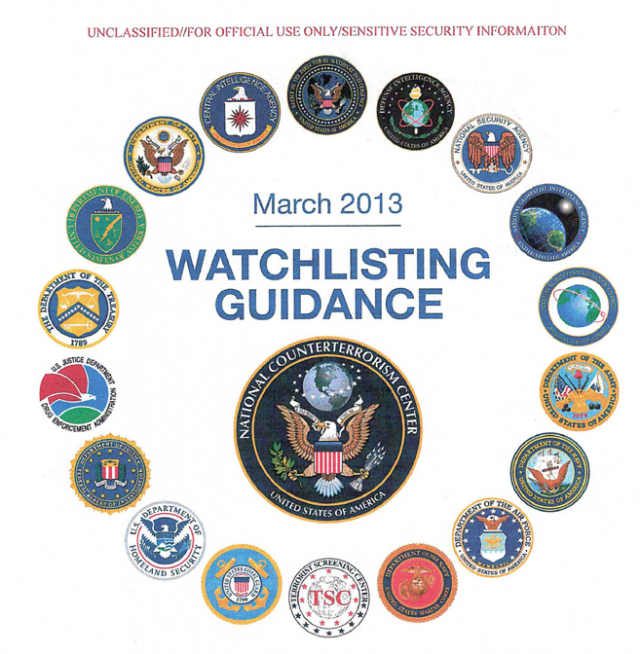
Federal agencies have nominated more than 1.5 million names to terrorist watchlists over the past five years alone, yet being a terrorist isn't a condition of getting on a roster that is virtually impossible to be removed from, according to a leaked US "Watchlisting Guidance" manual.
The 166-page document, marked as "sensitive security information" and published by The Intercept, comes amid increasing skepticism over how people are placed on or get off of US terrorism databases like the no-fly list that bars flying to and within the United States.
Attorney General Eric Holder, for example, had claimed last year that national security would be imperiled if the public knew that a Stanford University graduate student was placed on the no-fly list because an FBI agent checked the wrong box on a nomination form. And just last month, a federal judge ruled that the government's method for allowing the public to challenge placement on the no-fly list was "wholly ineffective" and unconstitutional.The leaked manual says there are a dozen-plus US agencies that have nominating power for the several watchlists the government maintains. But the guidance given to the agencies is vague and confusing, and it says that "concrete facts" about whether somebody is a danger "are not necessary." All nominations to the National Counterterrorism Center are considered "valid" unless that agency has evidence to the contrary. Of the nearly 470,000 nominations last year, the agency rejected 4,915.
The manual makes clear that "reasonable suspicion" for placement is necessary. But what that means is anybody's guess. The manual says:
To meet the REASONABLE SUSPICION standard, the NOMINATOR, based on the totality of the circumstances, must rely upon articulable intelligence or information which, taken together with rational inferences from those facts, reasonably warrants a determination that an individual is known or suspected to be or has been knowingly engaged in conduct constituting, in preparation for, in aid of, or related to TERRORISM and/or TERRORIST ACTIVITIES.
The document—which urges officials to take into account what somebody says on social media like Twitter and Facebook—adds:
In determining whether a REASONABLE SUSPICION exists, due weight should be given to the specific reasonable inferences that a NOMINATOR is entitled to draw from the facts in light of his/her experience and not on unfounded suspicions or hunches. Although irrefutable evidence or concrete facts are not necessary, to be reasonable, suspicion should be as clear and as fully developed as circumstances permit.
The Center for Constitutional Rights said in a statement that it was "dismayed" by the manual:
As attorneys who represent individuals on the No-Fly List, we are dismayed to read the details of how the government places people on the List based on criteria that are hopelessly vague and require no showing of a threat to aviation security. It appears that the introductory disclaimer in the guidelines that “watchlisting is not an exact science” is a gross understatement.
The document reveals that the threshold for labeling someone a terrorist and barring them from flying indefinitely is shockingly low. It appears the only requirement is that, in a federal agent’s judgment, a listed person pose a ‘threat’ of engaging in terrorism—defined so broadly that it could readily include civil disobedience—anywhere in the world. That leaves our clients with the impossible task of proving that they will not somehow become terrorists in the future.
There are plenty more loopholes, too. For example, spouses and children and "associates" of a "known or suspected" terrorist may also be watchlisted.
And the manual expressly says that "confirmed dead" people may also be watchlisted if a terror suspect "is using that identity" or if travel documents from a dead suspected terrorist have not been recovered.
Listing image by Doug
reader comments
127